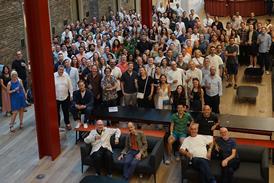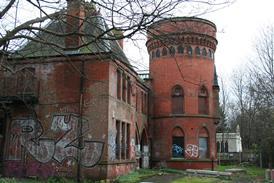- Home
 AHMM back in the black following last year’s restructure
AHMM back in the black following last year’s restructure Simpson Haugh submits 2,500-home student tower scheme in Manchester
Simpson Haugh submits 2,500-home student tower scheme in Manchester Crown Estate submits plans for 4,000-home Hertfordshire town masterplanned by Prior + Partners
Crown Estate submits plans for 4,000-home Hertfordshire town masterplanned by Prior + Partners Council looking for new development partner on scrapped transformation of listed Victorian baths
Council looking for new development partner on scrapped transformation of listed Victorian baths
- Intelligence for Architects
- Subscribe
- Jobs
- Events

2025 events calendar Explore now 
Keep up to date
Find out more
- Programmes
- CPD
- More from navigation items
Swifter, higher, stronger
As buildings get taller, the accompanying lift technology is having to keep up. In fact it is doing more than that – moving into the realms of science fiction and the Starship Enterprise.
This is premium content.
Only logged in subscribers have access to it.
Login or SUBSCRIBE to view this story

Existing subscriber? LOGIN
A subscription to Building Design will provide:
- Unlimited architecture news from around the UK
- Reviews of the latest buildings from all corners of the world
- Full access to all our online archives
- PLUS you will receive a digital copy of WA100 worth over £45.
Subscribe now for unlimited access.
Alternatively REGISTER for free access on selected stories and sign up for email alerts


